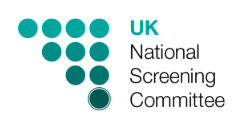2019 annual call topic proposals
Updated 20 October 2025
The UK NSC received 5 proposals in 2019:
1. Dyslexia in school-age children
UK NSC decision: evidence map commissioned, no further work
This proposal suggested that children of school age should be screened for dyslexia.
The evaluation group agreed that it fell within the UK NSC’s remit and had not been considered before.
It was decided that an evidence map should be commissioned.
This evidence map concluded that the volume and type of studies available about the accuracy of screening tests specifically for dyslexia is insufficient to justify a further review of the evidence.
2. Fetal presentation in pregnancy (to check on the baby’s position at 36 weeks)
UK NSC decision: evidence map commissioned and fetal presentation added to list of conditions the committee regularly reviews
The proposal is to screen all pregnant women for fetal presentation using a handheld ultrasound device during routine antenatal appointments at around 36 weeks of gestation.
The aim would be to detect the position of the baby to see if the baby is head-down (cephalic) rather than bottom or feet first (breech position) or lying sideways (transverse position). Screening would aim to detect those babies who were not head-down and to offer options to help manipulate the baby’s position to become head-down or offer a planned caesarean delivery to minimise harm to mother and baby.
The evaluation group agreed that this proposal had not been considered before and fell within a defined whole population group. It was agreed that an evidence map would be commissioned to scope the volume and type of published peer reviewed evidence available on this condition. The UK NSC agreed to this approach.
The evidence map recommended that the topic should be added to the UK NSC recommendations list, so that it can be reconsidered in 3 years’ time or sooner if significant evidence should be published before this time.
3. Liver cirrhosis in high risk groups
UK NSC decision: submission declined
The proposal calls to screen high risk groups of the condition using transient elastography. Liver cirrhosis is scarring of the liver caused by long-term liver damage which then prevents the liver from working properly. This can lead to liver failure. There is no cure for cirrhosis but it is possible to manage symptoms through lifestyle changes.
The evaluation group agreed that this proposal fell outside the UK NSC’s remit at the time because it related to high risk groups. It was proposed that no further work should be conducted. The UK NSC agreed.
4. Pressure reducing carotid stenosis in adults over 50
UK NSC decision: submission declined
It was noted that the UK NSC had looked at this topic following a 2019 annual call for topic submission and an evidence map had been commissioned. The recommendation of the 2019 evidence map was that further work should not be commissioned. Given the recent work undertaken on this topic and that no new evidence was submitted with the new proposal, it was agreed that no further work should be commissioned at this time.
5. 5q spinal muscular atrophy (SMA) in newborns
UK NSC decision: submission considered as early topic update
The proposal called for newborn screening for 5q SMA.
The evaluation group agreed that the proposal did not meet the inclusion criteria for the annual call for new topics, as SMA screening in newborns is included in the list of conditions that the UK NSC regularly reviews. However, it was agreed to consider this submission as an early topic update given that new evidence submitted by the stakeholder may impact the UK NSC’s 2018 recommendation not to offer antenatal or newborn screening for SMA.
The UK NSC evidence team assessed if the new evidence would have an impact on the conclusions of the 2018 UK NSC evidence review and presented its conclusion to this meeting.
The proposal drew attention to developments relating to treatment. The evidence presented by the NURTURE study showed promising results in relation to the efficacy of the drug nusinersen in asymptomatic individuals with SMA type I to II. It is important to note that these are preliminary results and the study is due to report its conclusion in 2025.
The recent change in the National Institute for Health and Care Excellence (NICE) guidance on the use of nusinersen as a treatment option in 5q SMA in individuals with pre-symptomatic SMA, or SMA types 1, 2 or 3 is also a significant development and focuses attention on screening. However, the information provided in the proposal did not include new evidence in relation to other criteria that were not met in the 2018 review, such as the screening test.
There were also concerns about the cost-effectiveness of the treatment. An estimate is difficult because of lack of evidence about long-term benefits and the possibility of regression. Therefore, an early update would be unlikely to change the conclusion of the review overall.
The UK NSC organised a workshop with a wide range of stakeholders to plan the next steps to review the case for screening for SMA. A proposal for a scoping exercise to inform a decision analytic model and cost effectiveness evaluation of newborn screening for SMA was drafted following the stakeholder workshop. This work is in the process of being commissioned.

